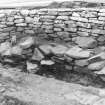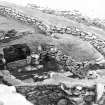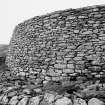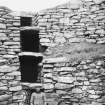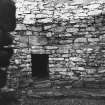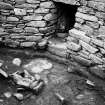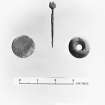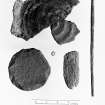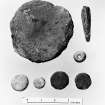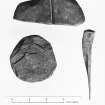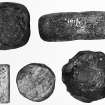Excavation
Date 1953 - 1957
Event ID 1003946
Category Recording
Type Excavation
Permalink http://canmore.org.uk/event/1003946
The broch of Clickhimin, one of the best preserved broch sites in Shetland, was excavated between 1953 and 1957 by Hamilton, who recovered a history which shed new light on the Iron Age colonization of the area.
The earliest occupation of the site was a small Late Bronze Age farmstead of the 7th or 6th centuries BC which was superseded by a larger circular farmhouse built by Iron Age immigrants about the 5th century BC. In the 4th, or early 3rd century BC larger and well-organised bands of Celtic settlers arrived, capable of erecting a stone-walled fort consisting of a block-house and ringwork, which was in turn superseded by a broch about the 1st century AD. In the 2nd and 3rd centuries AD the need for such defences passed away and the subsequent history of the site centres round a large wheelhouse built within the reduced tower and with minor outhouses, storage pits and cattle stalls dug in the debris inside the older defences. 310: Two fragments of Roman glass were found, one 1st to early 2nd century AD and the other 2nd to mid-3rd century. Both came from wheelhouse deposits.
J R C Hamilton 1968













































































































